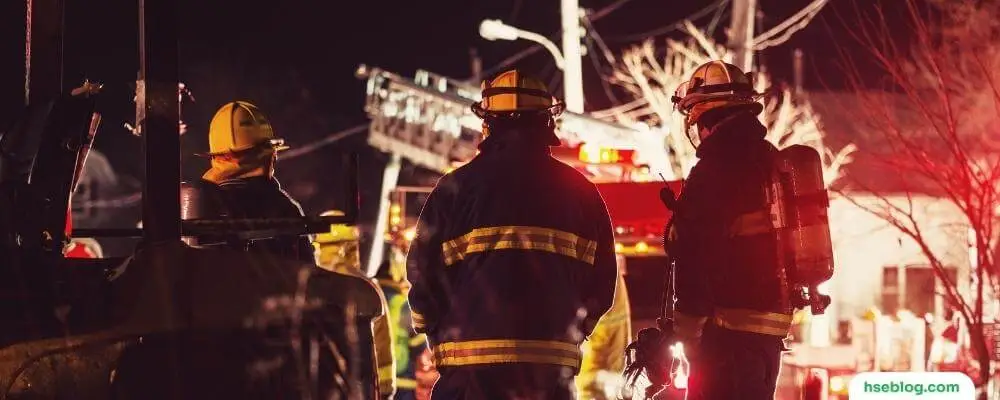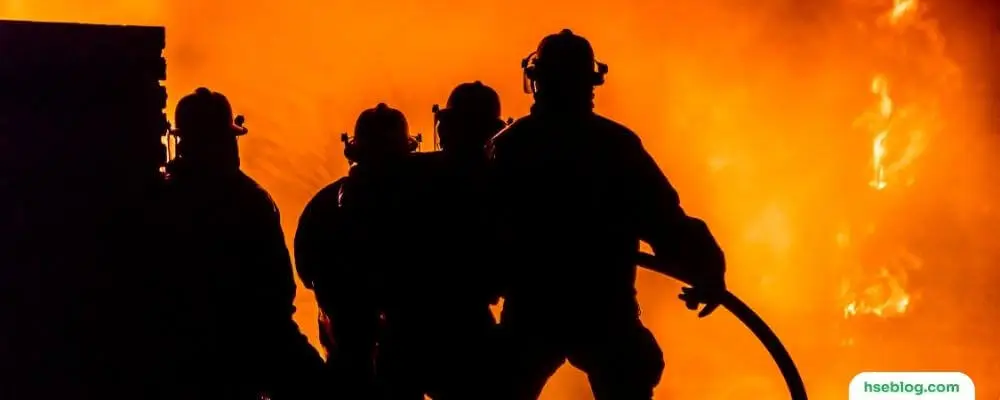Firefighters are the unsung heroes of our society. They put their lives on the line daily to help protect us from harm. To do their job as effectively as possible, firefighters need access to the best technology. This blog post will discuss 10 new technologies that help firefighters save lives!
The firefighter profession is continually being transformed by new technologies that make the job safer and more accessible. Firefighters have used technology since they were first employed to put out fires in significant cities. Today, various departments across the country use technology in different ways to respond faster, improve communication within the department, eliminate operator error while driving fire trucks, keep firefighters safe during emergency responses, and reduce costs.
Firefighters are known for their bravery in burning buildings or rescuing people from dangerous circumstances. But many brave men and women also risk getting injured on long shifts answering calls at all hours of the day. New technology is changing that fact by helping firefighters stay safer when not actively fighting a fire. Imagine how many lives could be saved if firefighters had complete camera control of their surroundings. With camera glasses, they will have complete camera control and even thermal camera capabilities to see through smoke or flames.
New Technology For Firefighters
Several new technologies are being developed or adopted to enhance the capabilities and safety of firefighters. Here are some notable advancements:
1. Firefighter helmets with visors to block heat
Helmets worn by firefighters may look like they protect their heads from falling debris, but they also keep them safe from a fire’s heat and flying embers. The newest firefighter helmets on the market have visors that can withstand intense heat. These new visor helmets were created during a partnership between Milwaukee-based helmet maker Guardian and Scott Safety, a respiratory protection equipment company.
Engineers at both companies worked together to create an accessory for firefighters that would work across all Guardian helmets and not interfere with communication devices already on some models. The first version is called the Visor Accessory Kit, or VAK, which is made of lightweight aluminum that attaches to the front of a standard firefighter helmet. The visors can withstand temperatures up to 1,700 degrees Fahrenheit and are available in 11 colors.

2. C-Thru Firefighting Helmet
The C-Thru firefighting helmet represents a significant technological advancement, integrating various features to assist firefighters during operations. The helmet includes a heads-up display similar to fighter pilot helmets, directly projecting information onto the lens. This information can include data such as the current temperature, remaining oxygen levels, and CO2 levels, which are critical in a firefighting scenario.
Additionally, the helmet can also be equipped with a thermal imaging camera. This feature allows firefighters to maintain visibility even in conditions with heavy smoke, which can often hinder conventional vision methods.
3. Assistive technology for firefighters who are deaf or hard-of-hearing
Firefighters who are on calls often have their hands totally fighting fires. They need every pair of hands on deck available during emergencies. Deaf and hard-of-hearing firefighters face new challenges when communicating on the scene during emergency responses due to all the loud noise from hoses, fire trucks, sirens, and other equipment working together simultaneously.
However, assistive technology is helping firefighters communicate on the scene without using their voices. For example, the iFire Mobile app allows users with hearing loss to capture visual cues from firefighters as they speak and then send those messages as text messages or as voice-to-text translated messages. Firefighters can also download the app on their smartphones during emergencies.
4. NASA Firefighting Suits and Shelters
NASA Firefighting Suits and Shelters: NASA has been developing advanced firefighting suits and shelters using technology initially designed to protect astronauts in space. These suits use active cooling and new fabrics to allow more prolonged exposure to high temperatures, providing better protection and endurance. The suits are also double-sealed, providing protection against hazardous materials. NASA has also developed lightweight, portable shelters that protect firefighters from fires. These compact shelters can be packed into a small space, making them easy to transport and deploy.
5. Wearable technology that senses dangerous gasses
Firefighters must quickly detect what types of gases are present at a fire and how much are present to respond more safely. However, this isn’t always easy because no available safety equipment offers reliable real-time gas sensing for firefighters. However, sensors may soon end up saving lives.
With funding from the National Science Foundation and several other federal agencies, researchers at the University of North Carolina have created a prototype sensor that detects common gases such as methane and carbon dioxide. The gas detector is about the size of a penny and attaches to clothing like a patch. It takes readings every four seconds and works even if wet or dirty – ideal for firefighters working in less-than-perfect conditions.

6. Fire Extinguishing Grenades
Although an older concept, fire-extinguishing grenades have seen advancements in recent years. The original concept involved glass bulbs filled with compounds that could extinguish fires. These bulbs would be thrown into a fire, where the glass would shatter, releasing the fire-extinguishing compounds.
More modern versions of this concept include fire-suppressing ‘grenades’ that can be thrown into an area engulfed in flames. These grenades quickly explode, relying on the rapid expansion of the compounds within to extinguish the fire. These systems can be deployed quickly and effectively, making them ideal for extinguishing fires indoors.
7. Mobile fire trucks that save time and money
Fire departments nationwide are looking for ways to improve their response times because this affects whether they can put out fires before they turn deadly. Dispatch centers nationwide send smaller fire engines called “quint trucks” to calls that don’t require a full-sized fire truck.
These smaller trucks can cut response times by almost 30 percent and have been in development for nearly a decade in the United Kingdom, called “civilian firefighting units.” In 2014, a quint truck rolled out in Orlando, Florida, the first U.S. city with one on its payroll. This smaller truck has less equipment than a regular fire engine but still carries lifesaving gear such as an oxygen tank and masks when there’s no working building ventilation available at a site.
8. Headlights that show firefighters the way
Firefighters need to see to do their jobs effectively and safely, but navigating dark hallways in a burning building is difficult. Researchers are developing head-mounted displays that help firefighters see through smoke.
A firefighter wearing the device could point it at his or her surroundings and get real-time information about the layout of the building being searched due to built-in sensors that wirelessly detect what is around them. The goal is for this technology to show firefighters their current location and provide directions when needed so they can easily navigate structures even in pitch blackness.
9. Drones
Drones have become increasingly popular in firefighting for various applications. They can provide a bird’s-eye view of a fire, helping to develop a more informed strategy. They can point toward the hottest and coolest areas of a building, look through smoke or other visibility-reducing elements, and even act as floodlights during nighttime missions.
Drones are also used in search and rescue operations, providing primary data while allowing rescuers to remain safe. In addition, drones can capture high-quality imagery and footage for post-event assessment, helping to analyze the damage and utilize the recorded footage for future training or re-evaluation. They are also particularly helpful in surveying wildfires, providing real-time data on which areas are becoming more dangerous and require immediate attention.

10. Sonic Fire Extinguishers
Sonic fire extinguishers, also known as wave extinguishers, leverage the power of sound to combat fires. The technology behind these innovative devices is based on using acoustic waves to suppress flames. When the extinguisher is activated, it emits a specific type of sound wave that causes an effect similar to separating the air from the fuel. This causes the combustion process to be disrupted and the material to burn out, effectively extinguishing the fire.
One key advantage of sonic fire extinguishers is that they only emit sound, making them safe for use around people and equipment. This feature is particularly beneficial in settings where conventional firefighting methods might risk sensitive equipment or personnel might be endangered by traditional extinguishing agents.
However, it’s important to note that this technology is still being developed and may not be widely available or effective for all types of fires. Furthermore, specific technical details about how these devices function, such as the exact nature of the sound waves used and how they interact with different types of fires, are not readily available in the sources I found.
Conclusion
In conclusion, technology plays an increasingly significant role in firefighting, bringing more efficiency, safety, and innovation to a dangerous profession. From wearable technology that provides real-time gas sensing and visibility to more advanced fire trucks, firefighting equipment is evolving to meet the challenges of a complex and dangerous environment.
Breakthroughs in the field, such as assistive technology for deaf or hard-of-hearing firefighters, NASA firefighting suits, and sonic fire extinguishers, are helping to make firefighters’ jobs safer and more effective. These advancements protect the brave men and women who risk their lives to save ours and increase the likelihood of successful missions, potentially saving more lives.
Integrating drones and augmented reality also brings a new level of intelligence to firefighting, allowing firefighters to have better situational awareness and make informed decisions during emergencies. It is clear that as technology evolves, it will continue to be a critical ally in our ongoing battle against fires.
The firefighting landscape is changing, and these new technologies are just the beginning. The continuous development of these technologies brings a promising future for firefighting, enhancing the capabilities of firefighters and, ultimately, saving more lives. As we continue to push the boundaries of technology, we can only imagine what the future holds for this heroic profession.

